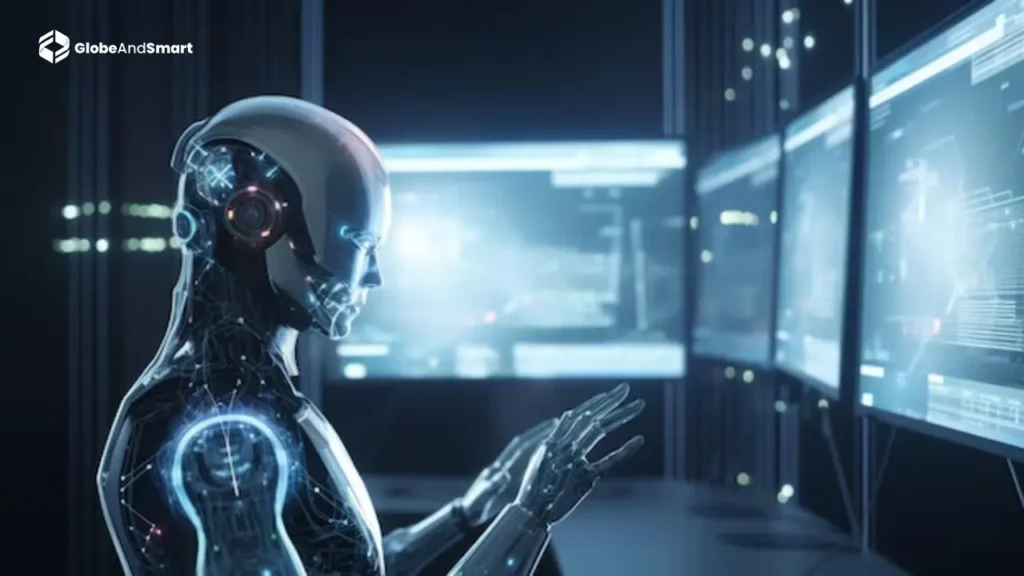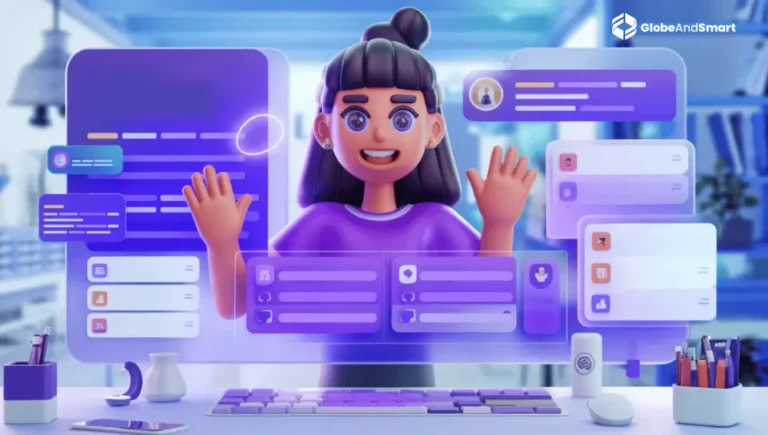What is Generative AI, and How Does It Work?

Generative AI is a cutting-edge technology that enables machines to create new and original content. Unlike traditional AI, which typically analyzes and processes data, generative AI goes a step further, producing entirely new data that mimics human creativity. This powerful tool has gained attention for its ability to generate everything from images and music to entire articles and videos.
What is Generative AI?
Generative AI refers to algorithms capable of generating new content based on patterns learned from large datasets at its core. This could include creating text, images, music, or even videos. These AI systems are trained using deep learning techniques, specifically neural networks, which learn the intricacies of the data they’re fed and can reproduce it in innovative ways.
How Does Generative AI Work?
Generative AI works through the use of machine learning models, particularly deep neural networks. It operates as follows:
- Data Training: The first step in the process is collecting and training the model on large datasets. These datasets could contain anything from text, images, and audio to even code. For example, GPT-3 is trained on vast amounts of written material, while image-based generative models are fed massive datasets of images.
- Pattern Recognition: Through training, the AI learns to identify patterns in the data. It understands the relationships between different elements, such as words in a sentence or colors in an image, which allows it to generate new content based on similar patterns.
- Content Generation: After being trained, the generative AI model can then generate new content. This could be in the form of written articles, pieces of art, or even music compositions, all based on the patterns it has learned.
- Fine-Tuning: In many cases, generative AI models undergo further fine-tuning. This is where they are specifically adjusted to focus on certain styles, genres, or types of output, making them more specialized and capable of creating more tailored content.
What are the Types of Generative AI?
Generative AI can be broken down into various types, depending on the content it creates. Some of the most common types include:
- Text Generation: AI models like OpenAI’s GPT-3 can generate human-like text, from news articles and blog posts to scripts and stories. These tools are widely used for automating content creation and assisting with customer service responses.
- Image Generation: AI has revolutionized visual content creation through tools like DALL·E and Generative Adversarial Networks (GANs), which generate lifelike images from textual descriptions.
- Music Generation: Tools such as OpenAI’s MuseNet and Jukedeck are capable of generating music in various genres. These AI systems analyze patterns in musical compositions and then create new pieces, mimicking the styles of composers or inventing entirely new compositions.
- Video Generation: AI models can also be used to create videos. For example, some models are able to generate realistic animations based on text prompts or even manipulate existing footage to create new narratives.
Real-World Applications of Generative AI
The applications of generative AI are vast and continuously expanding. Some key areas where it is making an impact are:
- Content Creation: Businesses and marketers are using generative AI to automate content creation for websites, blogs, and advertisements. This helps save time and ensures content remains fresh and relevant.
- Design and Art: Generative AI is transforming art and design. Artists are now able to leverage AI to generate new pieces of artwork, create digital designs, and even assist in video production.
- Healthcare: In healthcare, generative AI helps create synthetic medical data for research, as well as generate models for medical imaging and drug discovery.
- Personalization: Generative AI is used in recommendation systems to create personalized experiences for users. For example, in e-commerce, AI can generate product recommendations tailored to individual preferences.
- Gaming: The gaming industry is exploring generative AI for creating dynamic and immersive game environments. AI-generated characters, levels, and quests can offer players unique experiences every time they play.

Benefits of Generative AI
Generative AI offers numerous advantages, including:
- Efficiency: AI can generate high-quality content at scale and speed, dramatically reducing the time needed for manual creation.
- Creativity and Innovation: It opens up new creative possibilities, enabling creators to experiment with ideas and produce content that they might not have conceived themselves.
- Customization: Generative AI can tailor content to individual user preferences, enhancing engagement and satisfaction across various platforms.
Challenges and Ethical Concerns
Despite its potential, generative AI raises several challenges and ethical concerns:
- Bias in Data: Since generative AI models are trained on large datasets, they can inherit biases present in the data. This can result in the generation of biased or harmful content, especially if the data is unrepresentative.
- Intellectual Property: With AI generating creative content, questions arise about who owns the rights to this content, whether it’s the AI developer, the user who trained the model, or another party.
- Misuse of Technology: One of the most concerning issues is the potential for misuse of generative AI. Deepfakes, fake news, and misleading information can all be created with generative AI, leading to challenges in maintaining trust online.
- Resource Intensive: Training generative AI models requires substantial computational resources, which can lead to environmental concerns due to high energy consumption.
Bottom Line – The Future of Generative AI
Generative AI is evolving rapidly, and the future of this technology looks promising. As AI models improve, we can expect even more sophisticated outputs, such as hyper-realistic virtual assistants, fully autonomous content creation tools, and advancements in fields like personalized medicine and entertainment. However, the ethical and practical challenges will require ongoing attention to ensure the responsible and beneficial use of this powerful technology.



